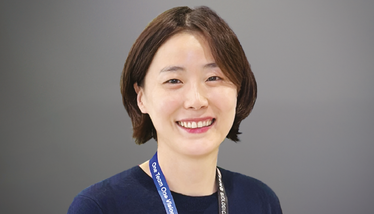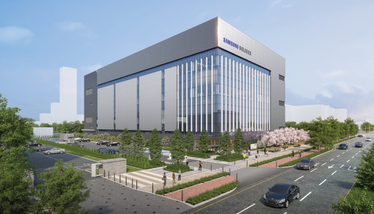A Love for Complexity: ADC Drug Development
Yoonjin Kwon, Lead Scientist, ADC Analytical Method Development, Samsung Biologics, offers her perspective on the future of antibody drug conjugates
| 4 min read | Interview

How did you first get involved with the field?
I started my journey with antibody-drug conjugates (ADCs) as a junior analytical scientist at a biotechnology company after earning my master’s degree. Then in 2014, I moved to Samsung Biologics to lead monoclonal antibody development. With the recent launch of the ADC service, my work has come full circle as I return to working with ADCs. Today, my role focuses on managing ADC development timelines in a way that mitigates risk while providing flexibility. Our ADC plant is under construction, so we have an opportunity to manage the ADC development process correctly – right from the start.
I take pride in contributing to optimal ADC development infrastructure. Soon, I envision working in Samsung Biologics’ dedicated ADC facility that would enable me and my colleagues to readily problem-solve any unexpected deviation, and thus execute ADC projects of various scales on time and without compromising quality.
As one can rarely predict when an issue may occur during ADC development, creating and then nurturing a culture of problem-solving readiness is especially important – not only for the safety of scientists, but also for the quality of ADC product delivery. Whenever I have time to spare during my packed lab schedule, I enjoy sharing my know-how on how to keep calm and readily cope in the face of unexpected problems in ADC development!
What makes these therapies so interesting?
The development of an ADC is a fascinating process that requires various complex analytical methods because of the different components involved, including the mAb, linker and the potential cytotoxicity of the payload. To create an ADC, you must optimize the drug-to-antibody ratio, drug load distribution, conjugated antibody, and naked mAb. Separate methods are needed to confirm the identity and purity of the payload, the linker, and the successful attachment. Along with the individual components, the functionality of the ADC needs to be characterized by understanding how to evaluate the conjugation site based on the manufacturing process. Fortunately, analytical techniques have improved alongside ADC candidates. We now have access to approaches, such as liquid chromatography-mass spectrometry (LC-MS), that are incredibly useful for ADC characterization.
None of these tests begins to characterize the potency of the ADC itself. Here, cell-based assays are needed to profile the potency and effectiveness of the ADCs – a crucial step.
Why has ADC drug development faced so many challenges over the past decade?
The previous challenges of ADC development were because of limitations in earlier ADC technologies. The first generation of ADCs suffered from toxicity issues because of the novelty of the linker. However, as ADCs progressed, so too has linker technology, reducing the rates of off-target toxicity and improving patient outcomes. We are now in the third generation of ADC therapies, where site-specific conjugation can improve the safety profile and target specificity. Through experience, we can now better predict site toxicity before a therapeutic enters clinical trials.

What other key trends are you seeing in this space?
Combination therapies – and that reflects a trend we’ve seen globally within the cancer therapeutic space. Bioconjugates are particularly exciting because of the many combinations available for experimentation: mAb with cytotoxic molecules (maytansinoids, auristatins, camptothecins, calicheamicins, PBDs, duocarmycins), mAb with protein toxins (diphtheria toxin, Pseudomonsas exotoxin), mAb with radionuclides (131I, 177Lu, 90Y, 225Ac), mAb with nucleotides (siRNAs, antisense), mAb with immunomodulators (STING agonists) and mAb with protein degraders . A second trend is the miniaturization of therapeutics. As we understand and optimize ADC therapies, we may be able to deliver effective treatments that do not require a complete antibody. I also see a trend towards bispecific antibodies (which can bind two antigens at the same time).
The Medicine Maker Presents:
Enjoying yourself? There's plenty more where that came from! Our weekly Newsletter brings you the most popular stories as they unfold, chosen by our fantastic Editorial team!
And what are the biggest challenges?
Intellectual property and the patent landscape remain significant challenges across biopharma. With inter-industry collaboration, we could accelerate the development of complex therapies to help patients, but the red tape of licensing often slows this process down.
Right now, there is a great deal of focus on supply chains in the wider pharma industry. Are there any specific supply issues in the ADC space – and what can be done to minimize disruption?
Reliable supply chains are essential for all therapies. The complex requirements for ADCs often translate to fragmented supply chains. It can be challenging to oversee vendor management to ensure consistent quality controls, synchronized timelines, and efficient communication. The absence of integration exposes developers to potential inconsistencies in product quality and leaves them susceptible to supply chain issues at multiple points. Some companies choose CDMO partners that can help simplify supply chain logistics with a more streamlined approach.
What’s next for the ADC field?
ADCs continue to advance rapidly. We understand how to use ADCs to activate the immune system to destroy cancer cells, allowing us to design targeted agents and potent payloads. Alongside ADCs, new companion diagnostics will enable us to match patients with the correct therapeutic for maximum response.
There are also exciting applications for bioconjugates beyond ADCs. With our advanced understanding of linker technology, we can combine two other modalities to create new functionality. For example, new bioconjugates could pair a vaccine with different polysaccharides – or nanoparticles could be combined with small molecules to deliver targeted treatments. These exciting technologies can help us push into the next generation of personalized medicine.



















